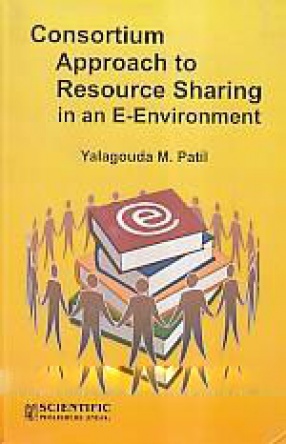Consortium Approach to Resource Sharing in An E-Environment
The book deals with resource sharing through consortium approach. During 1990s, due to journals crisis, emergence of scholarly electronic publishing, shift in print form to electronic version, escalation of costs of journals, all have compelled library professionals to move towards a strategic relationship in forming consortium by taking advantage of emerging new technologies. To begin with, resource sharing is briefed covering library cooperation. Emergence of electronic publishing has facilitated subscription to e-journals, access and delivery mechanisms. With proliferation of e-resources, constraints of copyright laws and licensing, library consortia have emerged with a sole aim of moving from organizational self sufficiency to a collaborative survival mode. There are several consortia types/models at organization level, types of libraries participating and parent organizations depending upon coverage of subject areas and purpose of coming together. The very purpose of consortia is to deal with pricing and licensing by means of negotiations and strike a deal suitable for stakeholders. With growth of different consortia in a country or region, it is desirable to coordinate all such efforts and look for National Consortium and go for National Site Licensing. Publishers were also providing bundled or ‘big deal’ offers which could solve journals crisis but not budget constraints as faced by libraries. With experience gained in forming consortia, library professionals also gained enough skills for negotiations which bring about win-win-situation to all stakeholders. In order to implement consortia activities, it is required to have minimum infrastructure including access to Internet, e-mail service, IP addresses, networking, archiving, etc. Also, the consortia should have some standards/ protocols such as COUNTER/SUSHI and SERU to run activities effectively. It is also important to look into archiving needs of consortia on a long term basis as publishers’ perpetual access suffer from trust factors, as a result of which some international agencies have emerged. It is also worth looking for consortia migration and merger in order to make better use of available information and enhance consortia interests on a much larger scales. There have been concerted efforts in India in forming consortia and a brief of each consortium is given followed by experiences gained which created confidence and strength to run consortia on a sustainable basis.
Contents: Foreword. Preface. 1. Introduction. 2. Resource Sharing. 3. Scholarly Electronic Publishing and E-Journals. 4. Library Consortium. 5. Consortia Types and Models. 6. Consortia Pricing Models. 7. Consortia Licensing for E-Journals. 8. National Consortium Site Licensing. 9. The Consortia and ‘Big Deals’. 10. Library Consortia Negotiations. 11. Library Consortia and Technology Infrastructure. 12. Consortia and Digital Preservation Systems. 13. Consortia Mergers and Migration. 14. Emergence of Consortia in India. 15. Indian consortia experiences. Annexures. References. Author Index. Subject Index.
Get it now and save 10%
BECOME A MEMBER







Bibliographic information